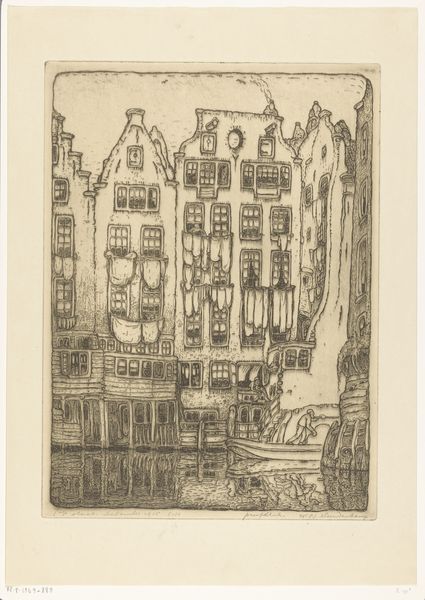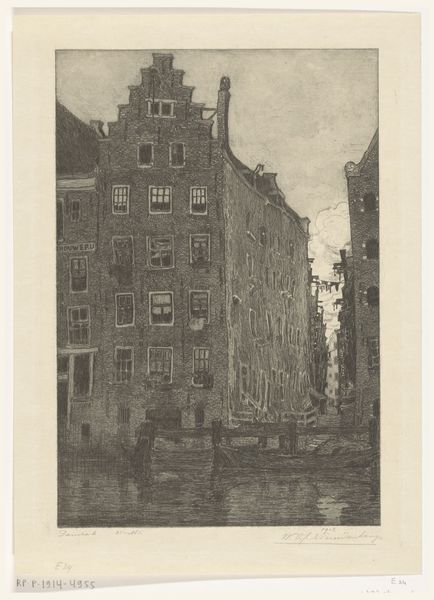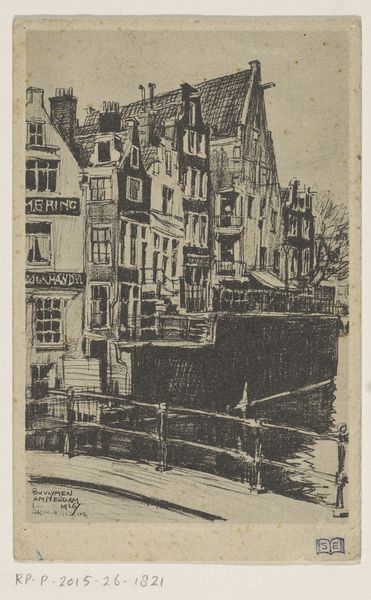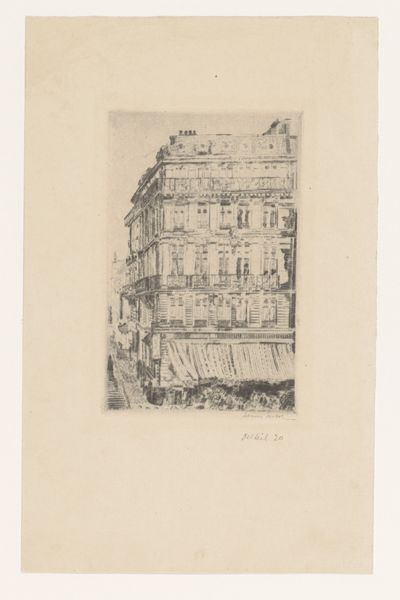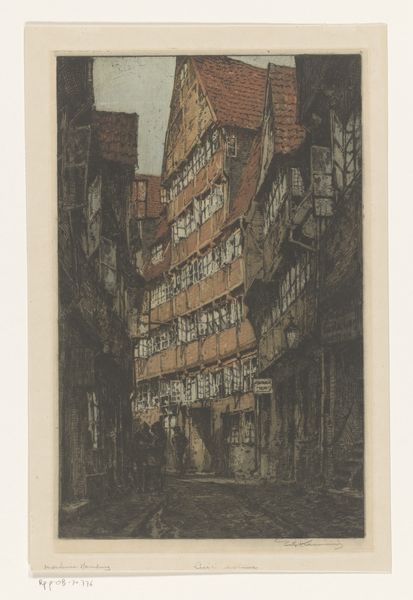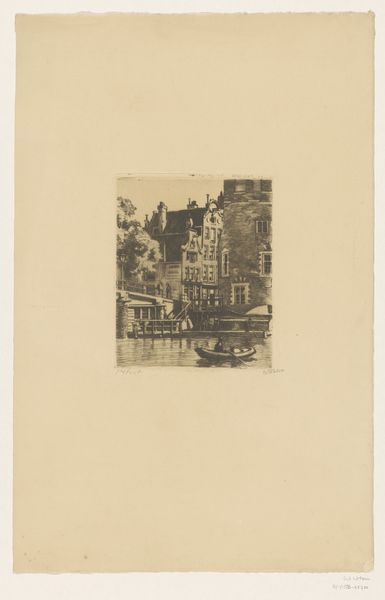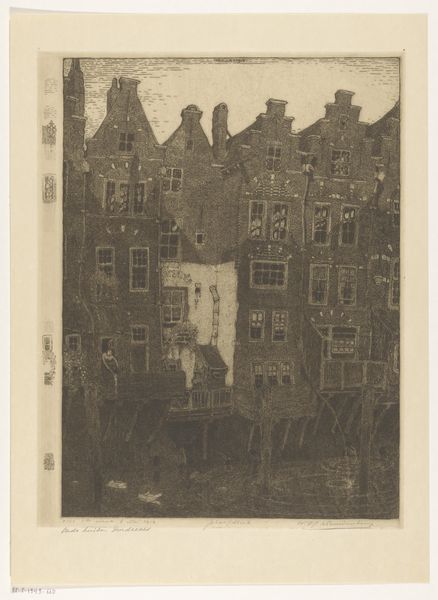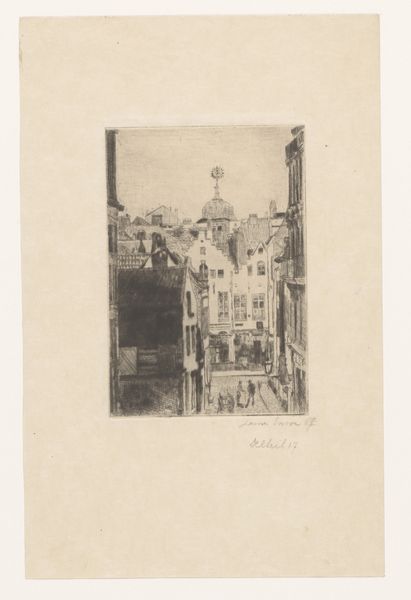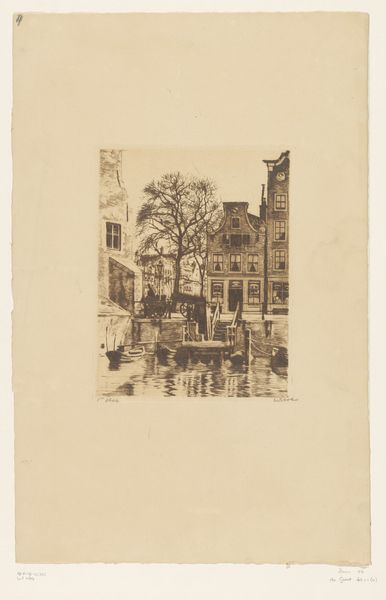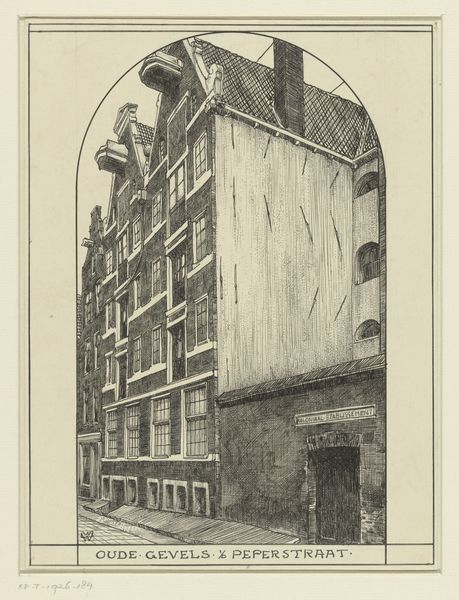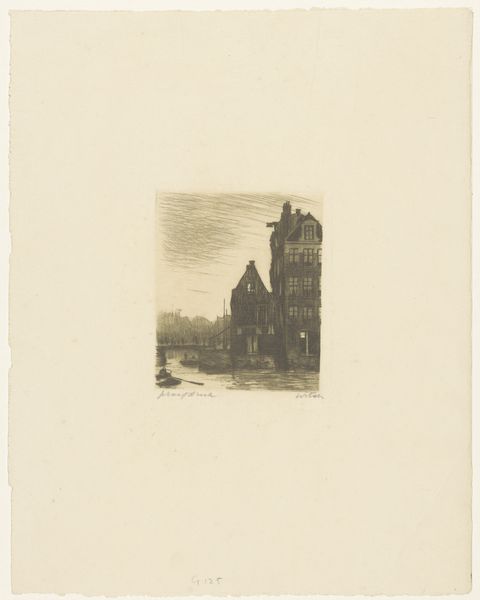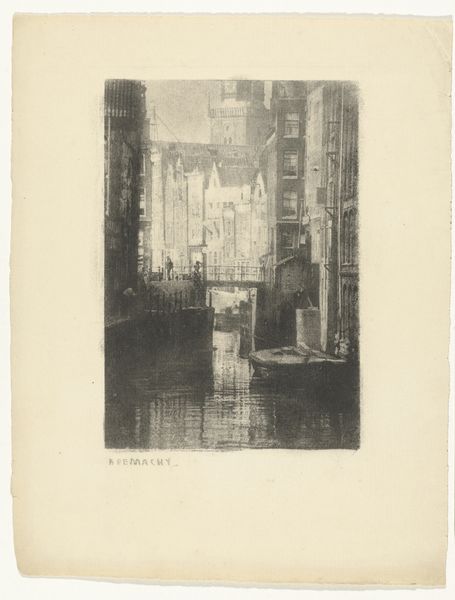
Grachtenhuizen aan de Sint-Olofssteeg in Amsterdam Possibly 1915 - 1918
0:00
0:00
#
aged paper
#
toned paper
#
old engraving style
#
etching
#
personal sketchbook
#
ink drawing experimentation
#
pen-ink sketch
#
ink colored
#
pen work
#
sketchbook drawing
Dimensions: height 452 mm, width 332 mm
Copyright: Rijks Museum: Open Domain
Wijnand Otto Jan Nieuwenkamp created this etching of canal houses on the Sint-Olofssteeg in Amsterdam, capturing a slice of Dutch urban life. This artwork reflects the cultural values and social structures of the Netherlands, likely in the early 20th century. The tall, narrow houses are typical of Amsterdam's architecture, designed to maximize space along the canals. This design reflects the economic importance of trade and the efficient use of land in a densely populated city. Nieuwenkamp's choice to depict these houses suggests an interest in everyday life. To fully appreciate this artwork, we might delve into archival records of Amsterdam's urban development, exploring how the city's architecture has shaped its social fabric. The history of Dutch printmaking and its role in shaping national identity is also key. By understanding the social and institutional contexts, we can better interpret the meaning and significance of art.
Comments
No comments
Be the first to comment and join the conversation on the ultimate creative platform.
